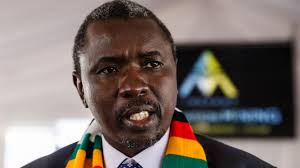Paralysed opposition parties supplying political oxygen to decaying Zanu PF

FORMER OPPOSITION LEADER: Nelson Chamisa
By Trevor Nyamuranga
THE structure and strategy of Zimbabwe’s opposition are under intense scrutiny, as the political terrain grows more complex and volatile. With the government of President Emmerson Mnangagwa facing mounting discontent over economic stagnation, corruption, and social decay, the opposition movement should theoretically be at its strongest. Yet, internal fractures and the absence of a cohesive leadership structure have left it vulnerable—not only to state infiltration but also to self-sabotage.
This situation reflects a broader malaise within Southern Africa’s opposition movements, especially as the Southern African Development Community (SADC) experiences a wave of political transitions. In Zimbabwe, however, the lack of organisational clarity has given rise to self-appointed voices leveraging social media prominence to shape narratives and dictate the movement’s agenda.
The Perils of Decentralised Leadership
In a political system that thrives on suppression, the opposition’s decentralised structure has become both an advantage and a liability. On one hand, the absence of a centralised leadership allows for grassroots mobilisation and flexibility. On the other, it opens the door to opportunists—individuals who lack accountability but wield outsized influence due to their social media visibility. These individuals often dictate the conversation, drowning out experienced voices and well-grounded strategies.
Such a scenario has proven fertile ground for state intelligence operatives to infiltrate the movement, either by posing as opposition figures or amplifying divisive rhetoric. Without a clear, uncontested leadership to steer the opposition’s course, the movement risks losing its focus, unity, and public trust.
Colonial Nostalgia and Its Electoral Ramifications
In their frustration with the ruling ZANU-PF’s failures, some opposition figures have resorted to narratives laced with colonial nostalgia. While this rhetoric may resonate with segments of the population disillusioned by decades of post-independence mismanagement, it plays directly into the hands of the ruling party’s propaganda machine.
For ZANU-PF and its security apparatus, such rhetoric offers an easy opportunity to brand the opposition as agents of neocolonial interests. This framing is particularly damaging in a region like Southern Africa, where liberation movements still command significant symbolic capital. By associating the opposition with colonial sentiment, the ruling party can discredit them as Trojan horses for foreign interests, thereby undermining their legitimacy.
The Weaponisation of SADC’s Political Transition
Southern Africa is undergoing significant political shifts. In Botswana, for example, the opposition recently achieved an unprecedented victory, breaking the ruling party’s decades-long grip on power. Similar trends are emerging in other SADC nations, where liberation-era regimes are struggling to maintain relevance in the face of rising youth discontent and economic challenges.
In Zimbabwe, however, the ruling elite has proven adept at adapting to these changes, often by exploiting opposition weaknesses. The state’s narrative, which paints opposition movements as destabilising agents backed by external forces, fits neatly into this broader regional strategy. This tactic not only weakens the opposition’s standing domestically but also complicates their efforts to gain support from neighbouring governments, many of which are led by parties with liberation-era ties.
High Stakes for Credibility and Unity
The opposition’s current trajectory raises fundamental questions about its future. Can it unify under a centralised, credible leadership that prioritises the public’s interests over personal agendas? Can it resist the temptation to play into the ruling party’s hands with uncoordinated and sometimes reckless rhetoric?
To achieve this, the opposition must address several critical areas:
Rebuilding Organisational Structure: Without a clear and unified leadership, the opposition will remain vulnerable to infiltration and manipulation. Establishing a transparent decision-making process is essential.
Strategic Messaging: The opposition needs to craft a narrative that resonates with the electorate without alienating key constituencies. This means moving away from colonial nostalgia and focusing on forward-looking policies that address the country’s pressing socio-economic challenges.
Leveraging Regional Momentum: While SADC nations are experiencing political transitions, the opposition must position itself as part of this broader movement for democratic renewal. Building alliances with other opposition movements in the region could amplify their voice and provide much-needed solidarity. This is an Ignite Media Zimbabwe news production.
Engaging the Youth: With a median age of 19.7 years, Zimbabwe’s population is overwhelmingly young. The opposition must tap into this demographic by addressing issues like unemployment, education, and social mobility.
Conclusion: A Defining Moment for Zimbabwe’s Opposition
As Zimbabwe stands on the brink of potential change, the opposition faces a defining moment. The stakes could not be higher, both for the movement itself and for the millions of Zimbabweans who are desperate for an alternative to the status quo.
However, without significant introspection and strategic recalibration, the opposition risks becoming its own worst enemy. In a region where political transitions are increasingly possible, Zimbabwe’s opposition must seize the moment—or risk fading into irrelevance.
By embracing unity, clarity, and a vision that resonates with the electorate, the opposition has a chance to redefine itself and the country’s future. Anything less will leave it trapped in the shadows of the past, ceding ground to a ruling party that has proven its ability to adapt and endure.






